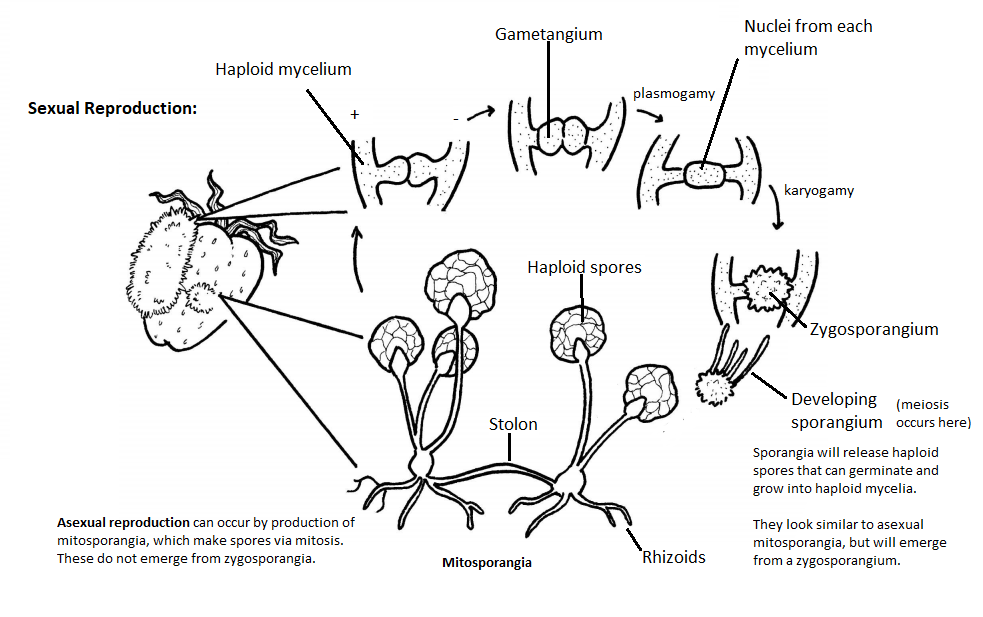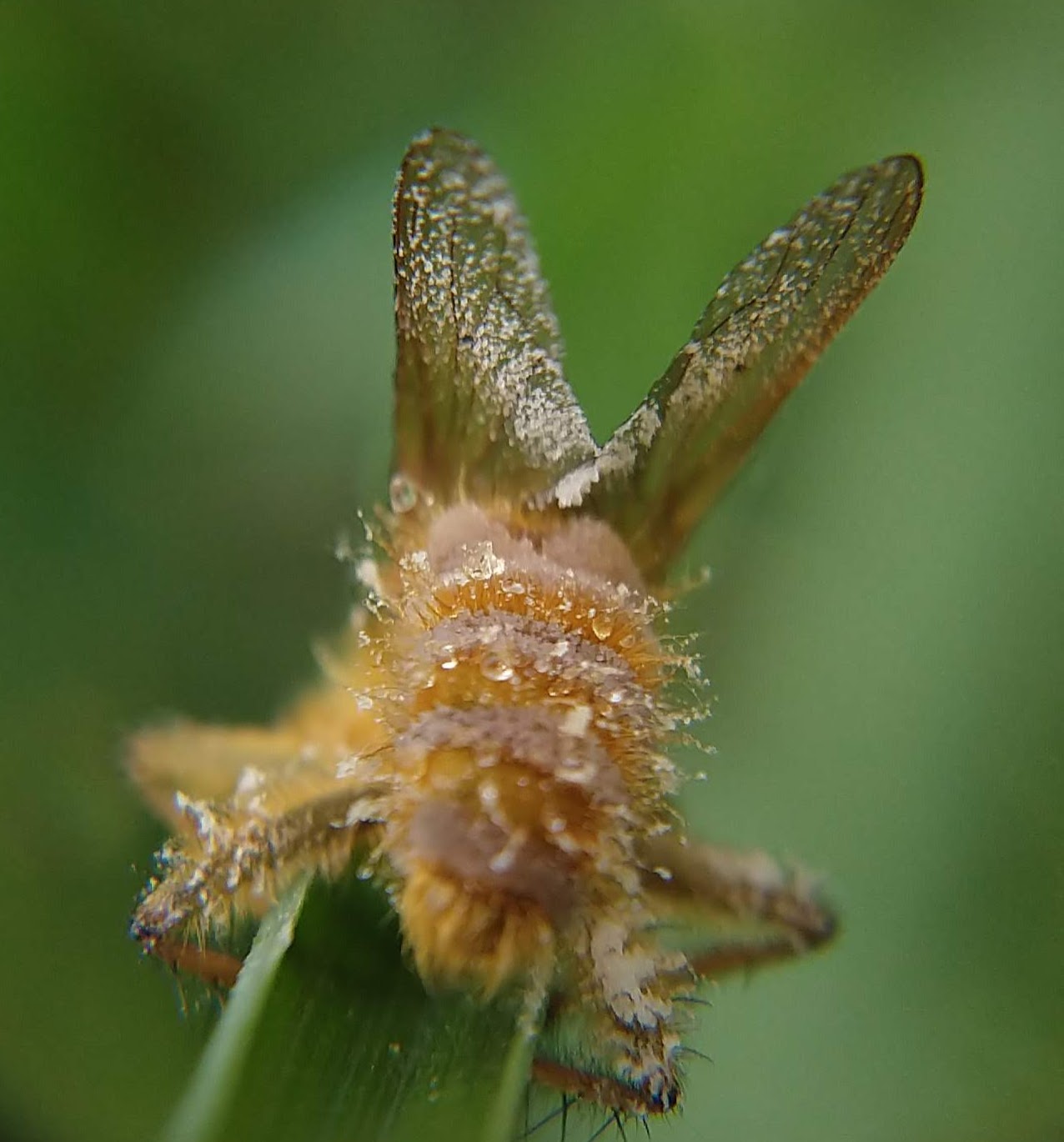3.3: Hongos formadores de Zygospora
- Page ID
- 56312
Estos organismos fueron clasificados anteriormente en un grupo llamado Zygomycota porque se reproducen sexualmente formando una estructura llamada cigospora. Sin embargo, desde entonces se han dividido en varios linajes diferentes.
Mitosporangio (Reproducción Asexual) e Hifas Coenocíticas


Formación de Zygospore
Cuando el micelio de un hongo se encuentra con otro hongo de la misma especie y un tipo de apareamiento complementario, puede comenzar a producir compuestos para interactuar con el nuevo hongo. A través de una serie de intercambios químicos, los dos hongos comienzan a extenderse cada uno hacia el otro. Cuando se tocan, se tapan un área de esa extensión creando un tabique. Esta zona, llena de núcleos haploides, se llama gametangio (ver Figura\(\PageIndex{3}\)). Las paredes entre las gametangias de cada hongo se disuelven y los dos hongos combinan el citoplasma (plasmogamia) y luego fusionan los núcleos (cariogamia) para formar muchos núcleos diploides. A medida que esto sucede, alrededor de los núcleos se forma una pared gruesa, anaranjada y ornamentada. Este es el cigosporangio.



Ciclo de vida de Rhizopus stolonifer
El ciclo de vida a continuación muestra la reproducción sexual y asexual en Rhizopus stolonifer. Tanto la reproducción sexual como la asexual dan como resultado la producción de esporas haploides que pueden germinar y convertirse en un micelio haploide. Sin embargo, las esporas producidas por las mitosporangias serán todas genéticamente idénticas, mientras que las esporangias producidas por los esporangios que emergen del cigosporangio serán genéticamente distintas.

Mire el video a continuación para ver las estructuras microscópicas involucradas en la porción asexual del ciclo de vida de Rhizopus stolonifer.
- 0:50 Comienza el video, mostrando el crecimiento de hifas coenocíticas
- 1:25 Formación de mitosporangio (reproducción asexual)
- 2:00 Se muestran mitosporas, esporas haploides producidas vía mitosis
- 2:30 Finaliza el video
Video\(\PageIndex{1}\): Estructuras asexuales de Rhizopus stolonifer. Se obtiene de YouTube.
Ejemplos de Linajes Fungicos Formadores de Zygospora
Estos grupos de hongos se pueden encontrar en tu vida diaria, si sabes qué buscar. Los mohos en las frutas y el pan suelen ser (pero ciertamente no siempre) de los Mucorales, así como los moldes que se forman en las heces de perro (específicamente, un género llamado Phycomyces). También se puede encontrar un variado surtido de antiguos miembros de “Zygomycota” parasitando a otros hongos e insectos.




